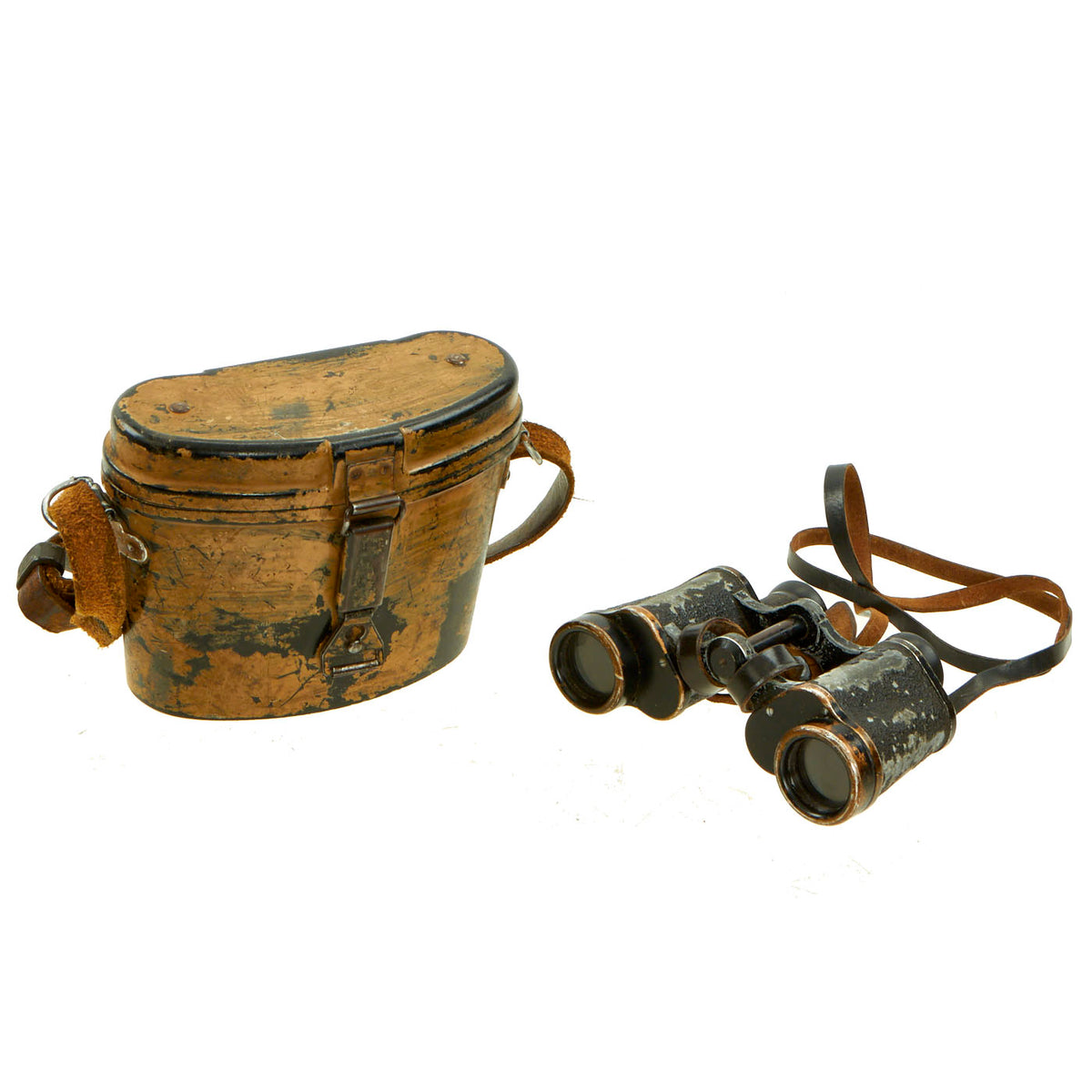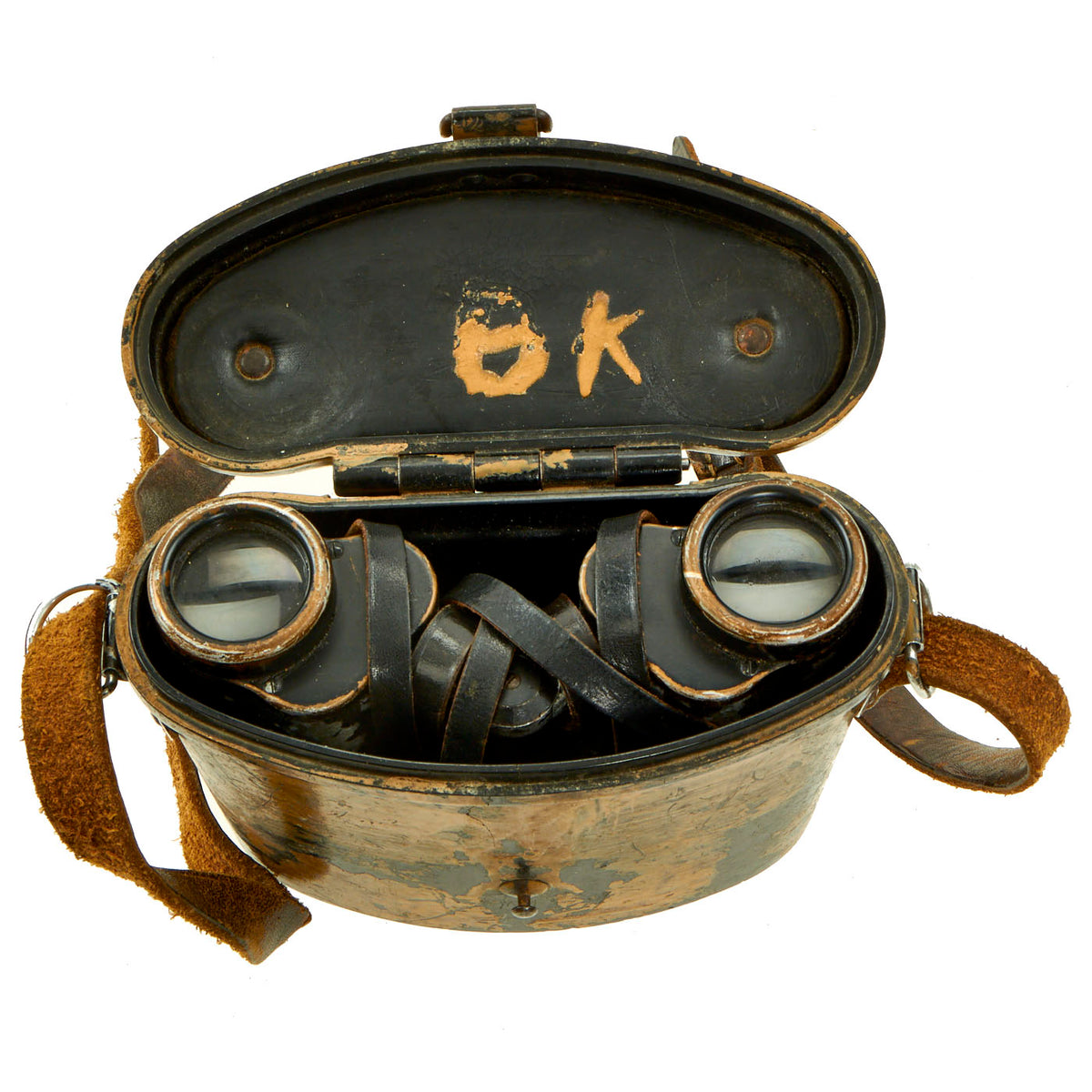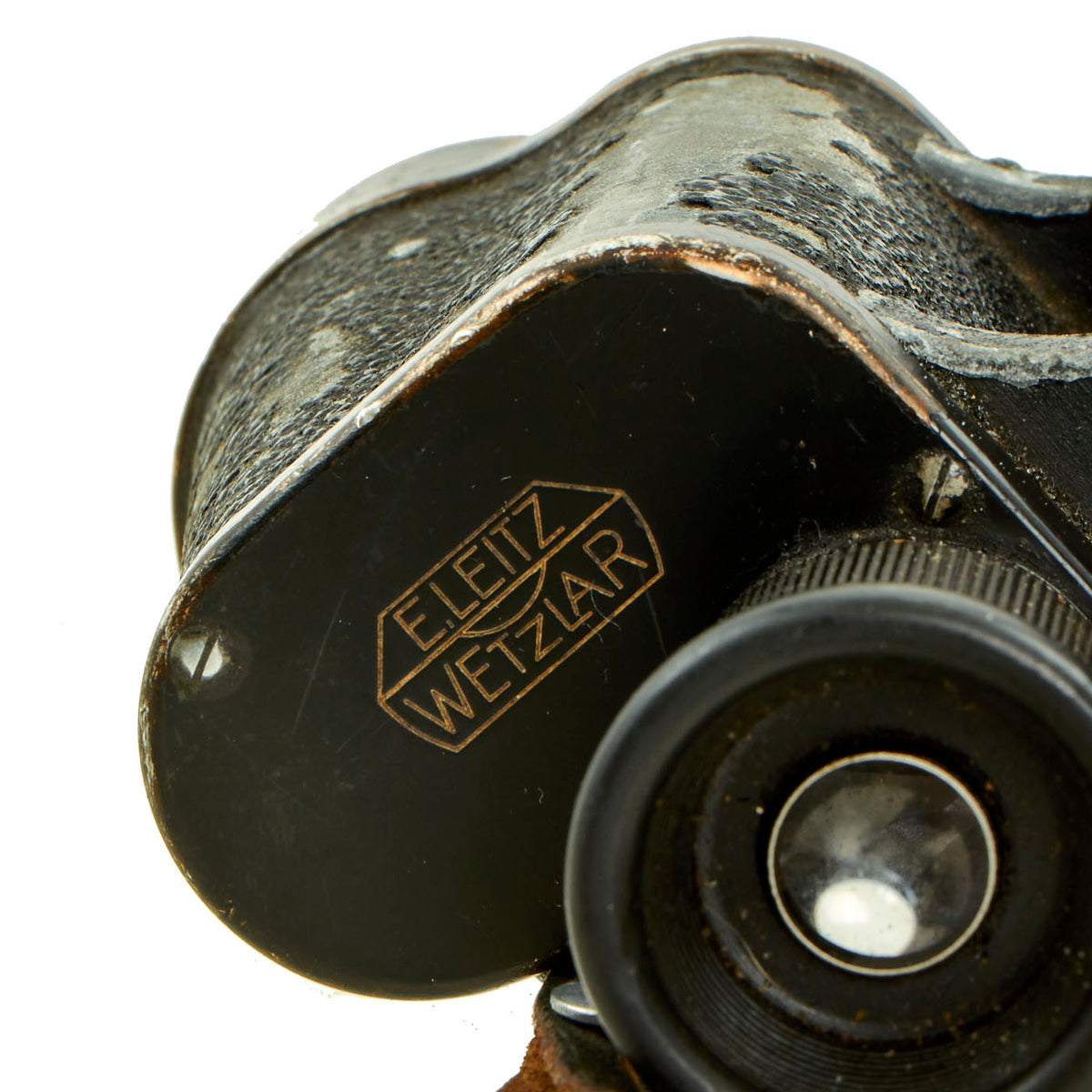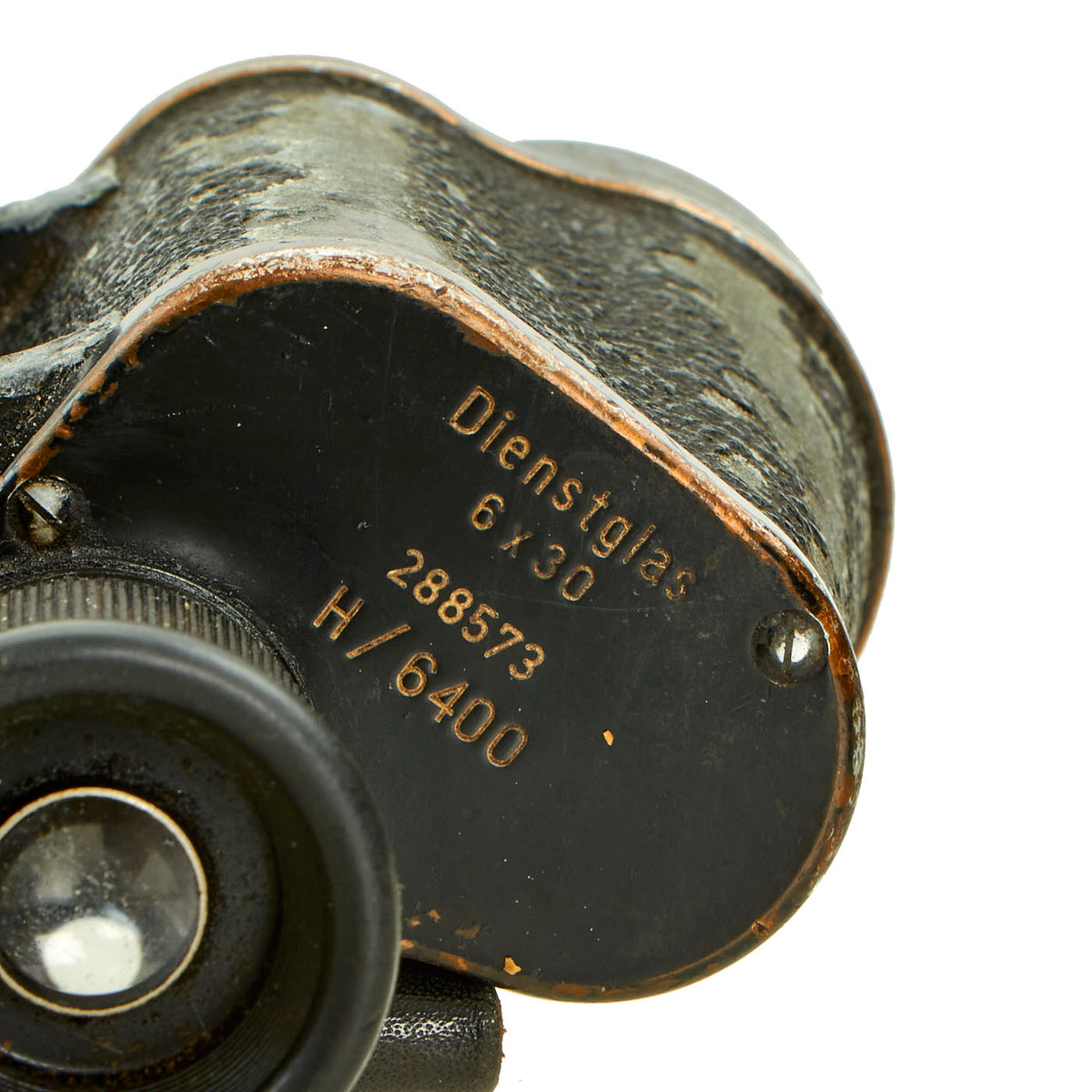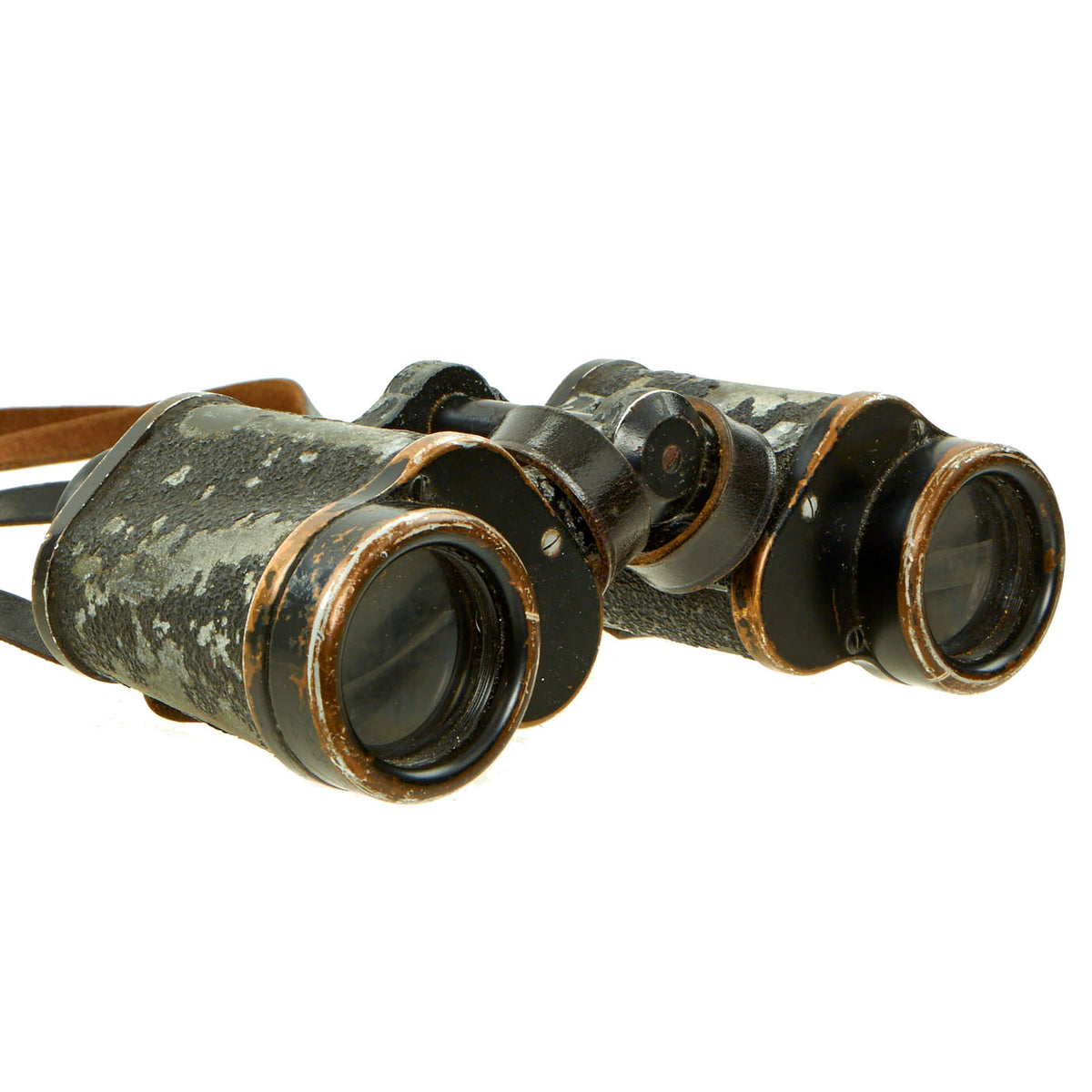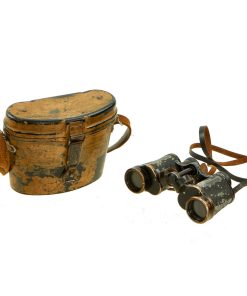Original German WWII Afrika Korps Ernst Leitz Wetzlar 6×30 Dienstglas Binoculars with Bakelite Case Original Items
$ 695,00 $ 208,50
Original Item: Only One Available. The 6×30 Dienstglas was one of the most used German issued binoculars of WWII. This example is fully functional, with mostly clear optics, complete with a range reticle in the right side. It is nicely marked as follows on the base of the barrels:
E. LEITZ
WETZLAR
It is marked on the right side, with the model and serial information on the right:
Dienstglas
6 x 30
288573
H / 6400
E. Leitz is for Ernst Leitz GmbH a German corporation which is now divided into four independent companies. The fine mechanic Ernst Leitz I. (1843–1920) from Baden arrived at Wetzlar in 1864 and entered service at the Optisches Institut. He was trained as an instrument maker for physical and chemical apparatus and had several years’ experience making watches in Switzerland. Initially, Leitz was a part shareholder of the business (in 1865), but took over as sole owner in 1869 and continued it under his own name. Leitz introduced serial production, raising sales volume rapidly after 1871. Consulting with his clients, he continued to refine the microscopes to their needs.
By the end of the 19th century, the company had a worldwide reputation. Its product range by this point included several optical instruments besides microscopes. At the beginning of the new century, Leitz introduced eight-hour days and founded a health insurance society for employees. In 1913 it introduced a first fully functional binocular microscope. After the First World War, the economic situation of Leitz was dire. Ernst Leitz died in July 1920 and the leadership of the company passed to his son, Ernst Leitz II.
In the late 1930s, Ernst Leitz II assisted a number of Jewish employees in fleeing Germany. In 1942, Ernst Leitz GmbH employed a total of 195 foreign citizens. By January 1945, there were 989 forced laborers, 643 of them “Ostarbeiter”, predominantly from Ukraine, and 316 “Westarbeiter” from France and the Benelux.
Besides cameras and microscopes, Leitz developed further optical products that would define the mid-20th century, such as slide projectors of the “Prado” series and Leitz episcopes that were frequently used in schools.
One by one, the three sons (Ludwig, Ernst and Günther) of Ernst Leitz II began work at the company. Having remained intact through World War II, the production facilities could be restarted immediately after the war ended.
The original bakelite case retains the original carry strap which is worn in appearance but the leather is still very solid. The tan color indicates that these binos saw service within the Afrika Korps. The bottom of the case has a year of manufacture which is 1938.
These are a lovely service used example of the ever so popular Dienstglas binoculars!
Comes more than ready for display.
Models
Binoculars used by the German military in the Second World War were made by a huge number of makers. The most well-known were Carl Zeiss, Ernst Leitz, Swarovski and Voightlander. Up to 1940 they carried the maker’s name and as well as the word ‘Dienstglas’which means service glass. From around 1940 the the maker’s name was replaced by a three letter code.
There were three common types of binocular issued to the German military before and during the Second World War: 6×30, 7×50, 10×50.
6×30
The 6×30 was the type commonly issued to NCO and officers. According to ‘Deutsche Soldaten’ they were issued to the squad leader independent of rank. They often had a graticule which is a series of lines in the right-hand lens. It was used to estimate distances. If you knew the size of a man or a truck that you could see with the binoculars, you could estimate the distance based on the number of lines it measured in the graticule. It was a technique that soldiers had to learn.
Early binoculars were made from brass. Later ones were made from an alloy of magnesium and aluminum, which was extremely light. Towards the end of the War binoculars were sometimes made from bakelite.
7×50
These are the classic night vision binoculars preferred by sailors. However, this spec was also used by the Wehrmacht (Army) and Luftwaffe (Air Force) as well as the Kriegsmarine (Navy). They are larger and usually the classic Zeiss shape.
10×50
These are the most practical size for modern applications such as bird watching or spectator sport. They give you powerful magnification and bright lenses. They had specialized use in wartime and were issued to artillery units. Senior officers have also used this type of binocular.
Field Marshal Erwin Rommel, the Desert Fox, used a pair of 10×50 Dienstglas binoculars. His had the bakelite eyepiece caps missing. He more than likely had them removed to better fit his “trademarked” dust goggles.
Fast Shipping with Professional Packaging
Thanks to our longstanding association with UPS FedEx DHL, and other major international carriers, we are able to provide a range of shipping options. Our warehouse staff is expertly trained and will wrap your products according to our exact and precise specifications. Prior to shipping, your goods will be thoroughly examined and securely secured. We ship to thousands clients each day across multiple countries. This shows how we're dedicated to be the largest retailer on the internet. Warehouses and distribution centres can be located throughout Europe as well as the USA.
Note: Orders with more than one item will be assigned a processing date depending on the item.
Before shipping before shipping, we'll conduct a thorough inspection of the items you have ordered. Today, the majority of orders will be delivered within 48 hours. The delivery time will be between 3-7 days.
Returns
The stock is dynamic and we cannot completely manage it because multiple stakeholders are involved, including our factory and warehouse. So the actual stock may alter at any time. It's possible that you may not receive your order once the order has been made.
Our policy is valid for a period of 30 days. If you don't receive the product within 30 days, we are not able to issue a refund or an exchange.
You can only return an item if it is unused and in the same state as the day you received it. You must have the item in its original packaging.
Related products
Uncategorized
Uncategorized
Uncategorized
Uncategorized
Uncategorized
Uncategorized
Uncategorized
Uncategorized
Angolan Rebel 1970s era 60mm Inert Display Mortar from Angolan Civil War Original Items
Uncategorized
Armored Burgonet Helmet & Polearm from Scottish Castle Leith Hall Circa 1700 Original Items
Uncategorized
Armoured Fighting Vehicles of the World: AFVs of World War One (Hardcover Book) New Made Items
Uncategorized
Uncategorized
Uncategorized
Uncategorized
Uncategorized
Uncategorized
Uncategorized
Uncategorized
Uncategorized
Uncategorized
